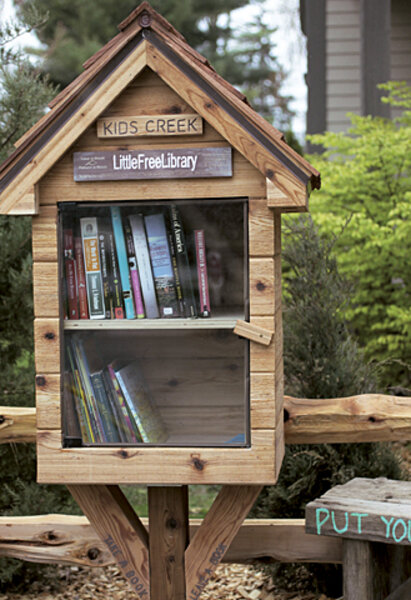A library sprouts overnight
Loading...
There was a brand-new house at the corner of Hatteras and Allot, in the suburban Los Angeles area where I walk my daughter's dog every morning. It hadn't been there the day before.
It was a dollhouse-size box on a stake.
The sign said "Friendly by Nature – Little Free Library. Charter Number 4775." In smaller letters, it said "Take a Book, Return a Book," and at the bottom, "Reduce, Reuse, Repurpose, Recycle." Behind the glass-paneled door were books.
I couldn't resist. I unhooked the door to take a closer look. I chose two: Antonia Fraser's "Must You Go?" about her life with Harold Pinter, and Audrey Niffenegger's "The Time Traveler's Wife." I left thinking of books I could leave for another's delectation. The next day I brought two of my own, which, by the following day, had been taken.
The Little Free Library movement began in Wisconsin, I discovered from my online search, then quickly spread throughout the country in cities, suburbs, towns, and rural communities. It was the inspiration of Todd Bol, who in 2009 had wanted to honor his late mother, a teacher who loved books.
He built a miniature wooden one-room schoolhouse, mounted it outside his Hudson home, and stocked it with books. Even on rainy days, people would stop by to make selections, drop off books, and remark on the library's cuteness. Mr. Bol enlisted Rick Brooks, a community outreach specialist in Madison, to help spread the word.
Currently, there are nearly 1,800 "library stewards," as Bol calls them, with registered cabinet-size "athenaeums" in about 45 states and dozens of countries, including England, Germany, Japan, Australia, and Ghana.
The libraries vary in shape and size, from a simple box without a door, to one with a double shelf, to brightly painted models, to ones like mine with a hinged door to protect the books from rain.
I enjoy the mystery of my local Little Free Library. Who donated the book I'm reading? Who took the book I left? Did that person enjoy it as much as I had?
Today I'm reading "Stealing Rembrandts: The Untold Stories of Notorious Art Heists," by Anthony M. Amore and Tom Mashberg. After I finish it, back it will go. What to add next from my own collection? Hmm. Perhaps Alice Hoffman's "Blackbird House" and Peter Tremayne's "Hemlock at Vespers: Fifteen Sister Fidelma Mysteries."
I'm so glad I stopped to investigate that new little house on the corner.







